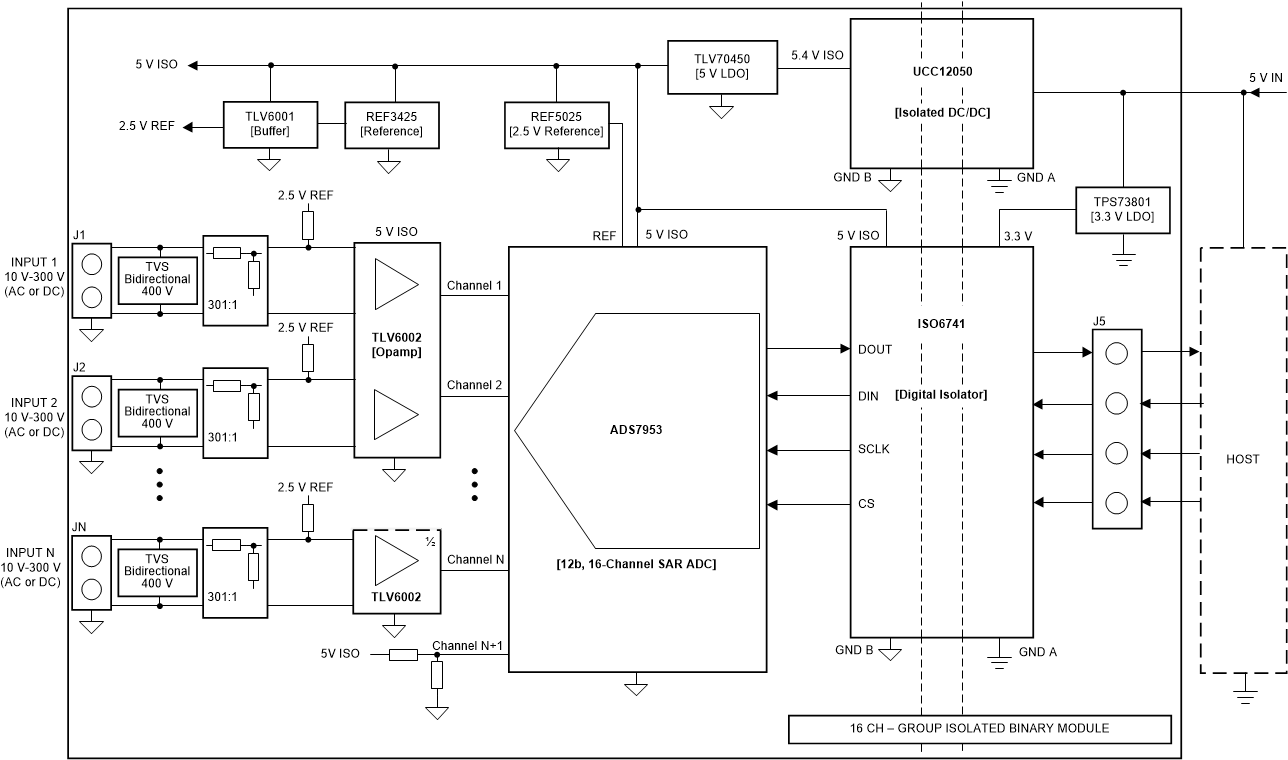TIDU858C March 2015 – May 2021
- Description
- Resources
- Features
- Applications
- 5
- 1System Description
- 2Design Features
- 3Circuit Design and Component Selection
- 4Testing
- 5Design Files
- 6References
- Trademarks
- 7About the Author
- 8Revision History
2.2 Block Diagram
 Figure 2-1 Block Diagram of ADC-based Binary Input Module
Figure 2-1 Block Diagram of ADC-based Binary Input Module